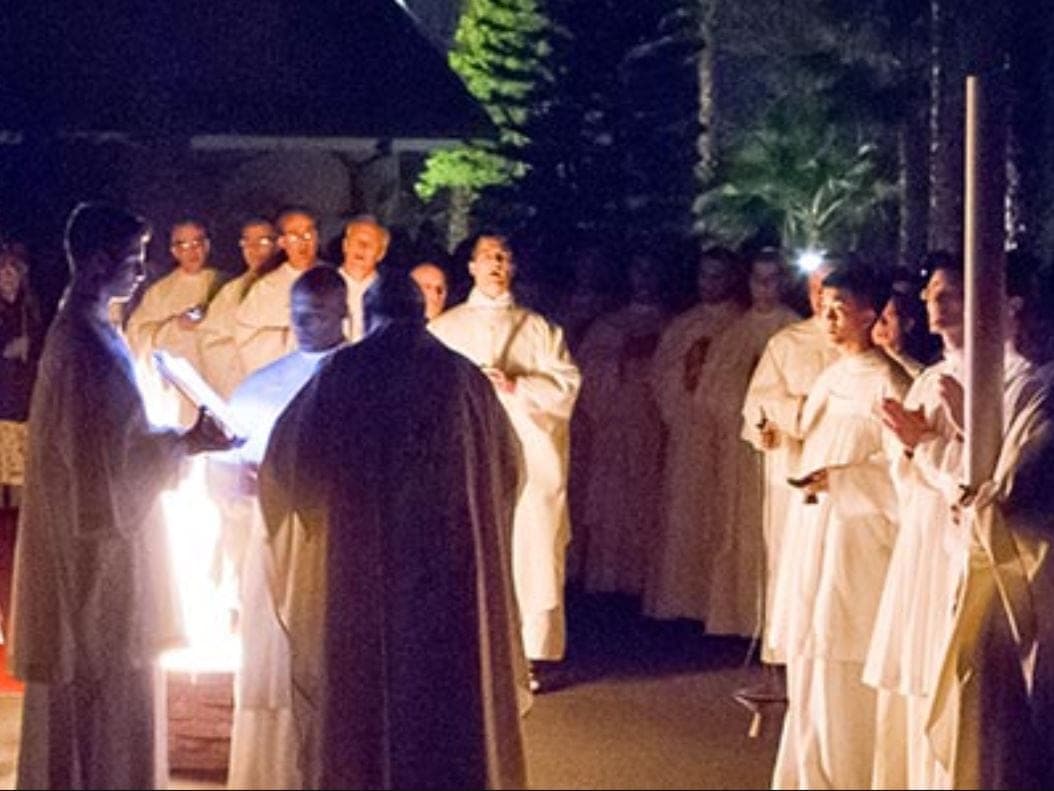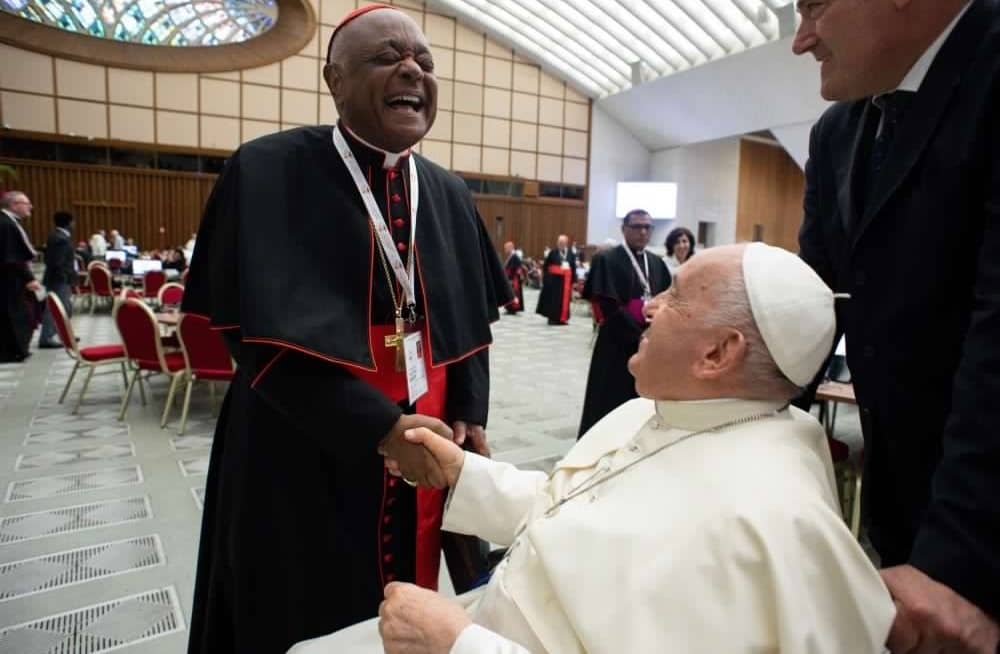[Editor’s Note: Father Justin Ramos grew up in the suburbs of Los Angeles, California. In 1987 during his university studies he entered the ancient and venerable order of the Canons Regular of Prémontré (commonly known in the United States as the Norbertines) of St. Michael’s Abbey in Orange County, California. He was ordained a priest June 24, 1995. In addition to regularly offering Mass on the weekends among other parishes in Orange and San Diego County, he works in the office of St. Michael’s Abbey Foundation, which was created in 2009 to steward the funds being raised to construct a new abbey complex that will be sufficient to accommodate the dramatic growth in vocations that St. Michael’s Abbey continues to experience. He spoke to Charles Camosy about his vocation and the Norbertine charism.]
Camosy: I grew up in Wisconsin, and had friends who attended St. Norbert’s College, so I knew about the Norbertines. But many of our Crux readers may not know about your order; can you fill them in?
Ramos: Saint Norbert founded the Norbertine Order in 1121 in Prémontré, France after his dramatic conversion, similar to that of Saint Paul the apostle. He was intent on reforming not only his own life but that of the clergy by founding an order of priests that live and pray the Liturgy of the Hours together in an Abbey and perform apostolic works in their surrounding area.
Norbertines are also known as “Canons Regular of Prémontré.” The life of a canon regular combines monastic or conventual life with an apostolate that flows from that life. At St. Michael’s, this includes teaching in schools; retreat work; chaplaincies in hospitals, colleges and prisons; parish work and spiritual direction.
St. Michael’s Abbey had humble beginnings when a group of seven Hungarian refugees from the Abbey of St. Michael at Csorna, Hungary, fled their country in 1950 and eventually came to the United States.
You have a new abbey in Southern California. Tell us about it.
Our community has grown exponentially since it was founded in the 1960s, so much so that it was necessary to build a facility that would not only house the current priests and seminarians, but also accommodate the many young men who wish to enter.
Currently, we have fifty priests and nearly forty seminarians in various stages of formation. We have simply outgrown our current facility and are unable to expand. We have purchased land nearby and are in the middle of building a Romanesque-style abbey, designed by French architect Jean-Louis Pages, in the tradition of the abbeys in Europe. St. Michael’s will become a quiet oasis of prayer and faith. The new Abbey should be completed by October 2020.
One generally doesn’t think of Abbey dwellers as very online, but you have a new internet platform called the “Abbot’s Circle.” Can you tell us more about that and what that entails?
So many people are formed, influenced, persuaded by what they read, see and hear in social networks.
The Abbot’s Circle is a monthly giving team that provides regular financial support of the abbey and our various ministries. We created a Digital Library as a ‘thank you’ for that support. It includes written, audio, and visual content that allows us to teach (or, if you will, preach to) the masses of people who are using the latest social means of communication. It provides resources for anyone seeking inspiration, instruction, insight into their faith or a deepening of their knowledge of God.
You are also developing a new video series titled “After the Upper Room.” What is that about? Will that also be available online?
Yes, “After the Upper Room” is our second web-series that will be available online. The first being the critically-acclaimed seven-part series, City of Saints.
What happened after our Lord ascended into heaven and sent the Holy Spirit to the apostles? This new series will focus on the mission of the apostles — where they preached, how they influenced and converted nations — in essence how the budding primitive Church carried out the divine mandate to ‘Go and baptize all nations in the name of the Father and of the Son and of the Holy Ghost.’
New abbeys and exciting projects generally come from orders that are growing. It must be the case that Norbertine vocations are healthy, yes? To what do you attribute this healthy state of the order?
Yes, we are very fortunate to have nearly forty young men in various stages of formation in the seminary. Five more applications have been accepted for the fall, but with our physical limitations, we are unsure how many more we can accept this year. God is blessing St. Michael’s Abbey tremendously because of our fidelity to the traditional Magisterium of the Church, as well as a strong prayer life, including chanting the Divine Office in common throughout the day.
Where can Crux readers find more information about these projects and the Norbertine order more generally?
Crux readers can find out more information about all of our projects, the Abbott’s Circle, the new Abbey, and more on our website – StMichaelsAbbey.com. We would also like to welcome your readers to come visit and pray with us. And if you would like to watch, listen, and read more about the work of the Norbertine Fathers at St. Michael’s Abbey, you can visit the Abbot’s Circle at – TheAbbotsCircle.com.
Crux is dedicated to smart, wired and independent reporting on the Vatican and worldwide Catholic Church. That kind of reporting doesn’t come cheap, and we need your support. You can help Crux by giving a small amount monthly, or with a onetime gift. Please remember, Crux is a for-profit organization, so contributions are not tax-deductible.

















